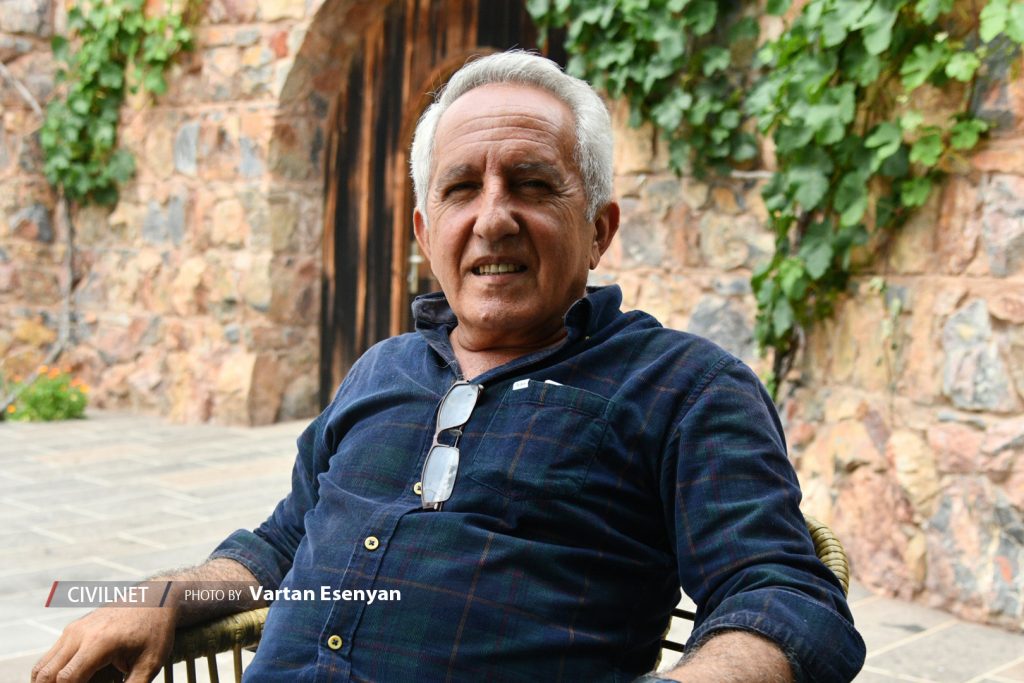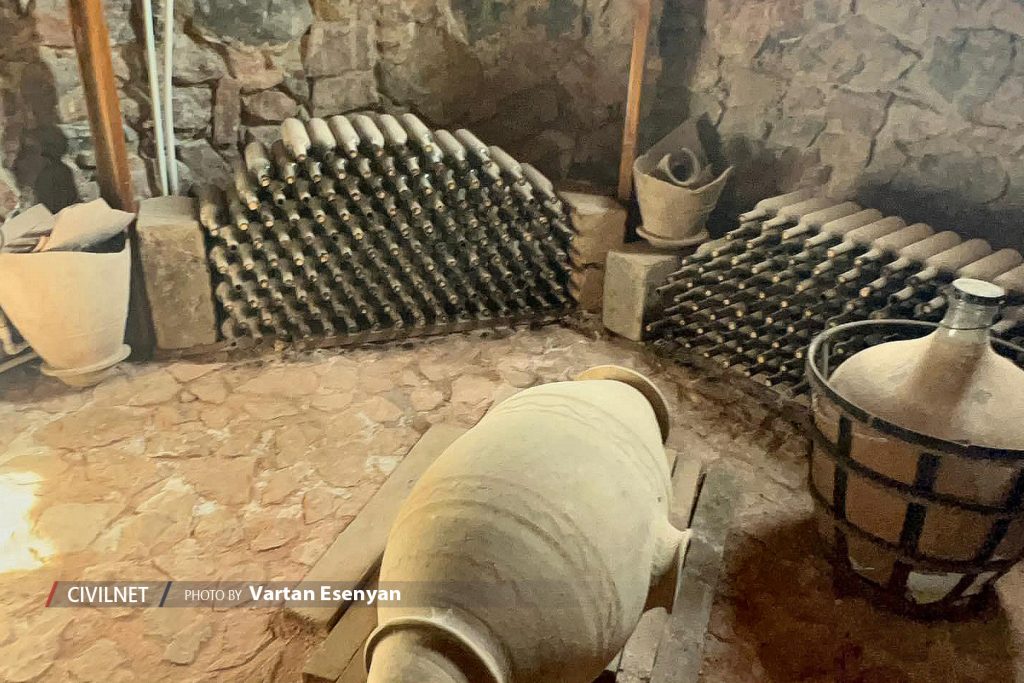By Vartan Esenyan
Nestled among the ancient mountains and fertile valleys of Armenia lies a winemaking tradition that spans millennia—a tradition well known to Mr. Mihran Manasserian, a third-generation Armenian winemaker whose story is an immersive experience that delves into the soul of a nation.
Here in the heart of the Ararat Valley where the air is crisp and the soil is rich in clay, Mr. Manasserian has been quietly cultivating and perfecting his wine using traditions dating back 6,000 years. He uses the knowledge passed from his great grandfather.
“Winemaking in Armenia is like conducting a symphony of flavors woven from a diverse array of indigenous grape varieties in a unique terroir at high altitudes,” says Mr. Manasserian, a graduate of Armenian National Agrarian University during the Soviet Union era.
He built his dream in 1992 on ten hectares of property, 800 meters above sea level nestled below the Biblical Mt. Ararat, in Taperakan village with ideal soil and climate conditions. He named it Tushpa in memory of his ancestor’s birthplace in Van, Turkey.

Manasserian speaks eloquently about the grapes of his region, especially the Haghtanak he grows. Haghtanak, known for its rich and intense flavors, often contributing to wines with deep color, good tannic structure, and complex flavors, means “victory” in Armenian, reflecting perhaps a historical or cultural significance in the Ararat Valley.
Manasserian’s forefathers were from Aralesk village close to Van, Turkey, now called Kalecik. They lived right at the ledge of Araler mountain, which resembled a huge stone as if it had fallen from the sky. In 1916, during the Armenian Genocide, they fled to Baghdad and lived in the English camps for a few years then finally, in 1921, moved to Armenia and setted in Shahumyan village. They stayed there for a short time before establishing Taperagan Village with just 11 families.
“My granddad from my father’s side was a woodworker, the other was a bricklayer. Together with the other families, they built the first houses in this village, they were engaged mostly in farming. My father worked as an agronomist in our village, then became the head of the village. There was a wine factory here, he engaged in winemaking,” remembers Mr. Manasserian.
While well aware of the hazing in his eyes, he recalls his first job as an apprentice at Yeraskh Wine Factory, which was called Ararat Combinat back then.
“In Soviet times, the Central Committee mandated that Armenia shall produce primarily cognac and port wine. So, we produced both,” he says. “While Ararat Valley was well known for its brandy and sherry production worldwide, back then, there were many little-known great wines produced in Vayots Dzor and in northern parts of the country.”

Indeed, demand in Russia for Armenian cognac and port wine soared. Coveted by the elite and the wealthy, it was the liquor of choice for making an upscale statement. Armenian cognac was made exclusively with Kangoun grapes, native to the Armavir region and widely grown in the Ararat valley.
“In the old days, to an extent, if the winemakers didn’t produce cognac from Kangoun, they wouldn’t know what to do with it.” laughs Mr. Manasserian.
His eldest son Abraham, who followed in his footsteps, eventually broke the stereotype 12 years ago by perfecting a great dry white wine using the Kangoun grapes. This success made Mr. Manasserian confident in taking chances and exploring palatable possibilities by creating new sparkling wines.
According to Mr.Manasserian the vine varieties of the north had very delicate shades, their scent was unique, similar to Champagne grapes.
“What is important is their titratable acidity, which is very high, and in order to make great sparkling wine, the titratable acidity needs to be high in grapes. Then, we tried not only the grapes from the north but also from Vayots Dzor. We found that the Tozot grape variety had great potential. So, we made sparkling wines from it,” he adds.
What sets Manasserian’s winemaking apart from its Western counterparts is the creation of a small cuvee with steadfast commitment to Armenian tradition that embraces age-old techniques passed down through generations.
Yet, alongside this reverence for tradition which includes fermenting in clay vessels and aging in underground cellars, there is a spirit of innovation that is driving Armenia’s wine industry into the future.
One of the most intriguing aspects of Armenian winemaking is the resilience of its grapevines against common diseases. Unlike many Western vineyards ravaged by pests and pathogens, Armenian grapes remain remarkably unscathed—a phenomenon attributed to the region’s unique terroir and the absence of the phylloxera pest.
Here, amidst the whispering vines and ancient monoliths, one cannot help but be captivated by the allure of the ancient Areni Noir in the Vayots Dzor, or the queens of Armenian grape Voskehat and Khndoghni – indigenous varieties from Artsakh (Nagorno Karabakh).
The post Armenian Wine: A Journey Through Time and Terroir appeared first on CIVILNET.